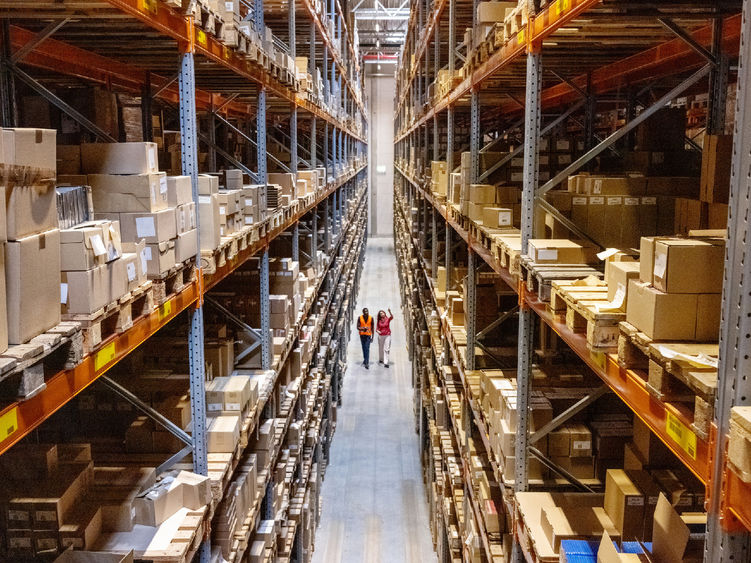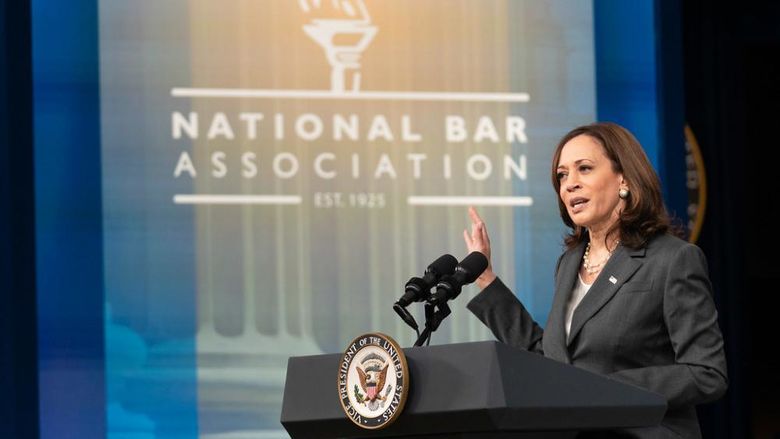
UNIVERSITY PARK, Pa. — Jobs and the economy are among the most important issues for voters during the 2024 presidential election, with interest rates, the cost of consumer goods and job availability at the tops of people’s minds. Penn State News spoke with Kenneth Louie, associate professor of economics, Penn State Behrend, to learn more about the current state of the U.S. economy and the issues that the presidential candidates will need to address as they continue on the campaign trail.
Q: What is the current status of the U.S. economy, and what actions could strengthen it?
Louie: The U.S. economy is continuing to display remarkable resilience as reflected in three important economic indicators: employment; output, or the quantity of goods and services produced; and earnings.
In terms of employment, the economy added over 2.5 million jobs in 2023, an average of over 200,000 jobs per month on a seasonally adjusted basis. Job growth has continued throughout the first seven months of 2024, although the pace of that growth has slowed. Throughout 2023 and early 2024, the monthly unemployment rate remained below 4% on a seasonally adjusted basis, increasing only slightly to 4.3% in July.
In terms of output, the U.S. Gross Domestic Product — or the total value of goods and services produced, essentially a measure of the size of the country’s economy — grew by 2.5% in 2023 and 2.8% by the second quarter of 2024, an improvement compared to the 1.9% growth in 2022.
In terms of earnings, the average hourly earnings for all employees on private nonfarm payrolls increased by 3.6% in July compared to a year ago. The robust growth in average hourly earnings, combined with the slower 12-month increase in the Consumer Price Index (CPI), a measure of the average price of consumer goods and services, of 2.9% in July, implies that American workers, on average, are experiencing a modest increase in their real purchasing power.
Actions that could strengthen the U.S. economy include sound fiscal and monetary policies. On the fiscal side, government spending and taxation policies that enhance the productivity of the country’s resources, balanced with careful consideration of the potential impact on the budget deficit and national debt, would be beneficial. Examples include policies designed to improve educational and health outcomes, increase investment in public infrastructure and promote innovation and entrepreneurship. In terms of monetary policy, continued adherence by the U.S. Federal Reserve (Fed) to its “dual mandate” of maintaining price stability and maximum sustainable employment for the economy would be beneficial. So far, the Fed seems to have achieved the elusive “soft landing” for the economy by slowing down the rate of inflation without inducing a recession. But the Fed will need to maintain continued vigilance in carrying out this difficult balancing act.
Q: Will interest rates go up or down this year? What could the government do to guard against inflation?
Louie: At its July meeting, the U.S. Federal Reserve decided to keep interest rates unchanged to try to get inflation under control. In general, lowering interest rates tends to stimulate the economy and potentially increase the rate of inflation, while raising interest rates tends to slow the rate of inflation. But Fed Chairman Jerome Powell has suggested that the Fed may begin to lower interest rates at their next meeting in September and may enact several interest rate cuts by the end of the year.
The Fed believes that it can begin to cut interest rates because it has made significant progress in bringing down the rate of inflation and because U.S. labor market conditions have begun to cool. The most recent data indicate that the 12-month rate of increase was 2.9% for the Consumer Price Index and 2.5% for the Personal Consumption Expenditures Price Index, another measure of the prices people pay for goods and services. Both indices are slowly moving closer to the Fed’s 2% target rate of inflation, which the Fed considers to be most consistent with its mandate of maintaining maximum employment and price stability. The pace of job growth has also slowed. Of course, the Fed is always careful to add that interest rate cuts will depend on whether additional inflation and employment data in the upcoming months will give them greater confidence that inflation is under control and the labor market is cooling down.
Economic theory and historical experience have taught us that the government can guard against inflation by avoiding excessive fiscal stimulus resulting from government spending and/or tax cuts, especially when the economy is at or close to its full potential level of employment and output, and avoiding excessive monetary stimulus resulting from increases in the money supply that exceed the economy’s rate of growth. Additionally, government actions that boost the economy’s productivity and aggregate output can help to guard against inflation.
Q: How might “shrinkflation” and tax cuts affect voters?
Louie: Inflation is one of the top issues on voters’ minds as we approach the 2024 presidential election. Given the persistence of inflation during the past three years, some voters have expressed concern that companies have been engaging in unscrupulous practices such as “price gouging” whereby prices are raised beyond what is necessary to offset higher costs, or packaging strategies resulting in “shrinkflation” whereby the amount or size of a product is reduced while the price remains the same.
Given this contentious issue, both presidential candidates have put forth proposals to help lower inflation. Democratic candidate Kamala Harris is expected to propose, among other recommendations, a federal government policy to restrict corporate price gouging. Former President Trump’s policy proposals have included encouraging more domestic energy production to bring down the cost of fuel.
Since inflation can impose significant financial hardship on American families, voters in the upcoming election are likely to scrutinize the different policy stances of the candidates to help keep inflation low.
Regarding tax policy, tax cuts for individuals will increase the disposable incomes of voters. Typically, part of that extra disposable income will be spent on consumer purchases of goods and services and part of it will be saved. Since consumer spending accounts for roughly two-thirds of total spending in the economy, the increase in consumer purchases can potentially have a big impact on the economy. At the same time, the increase in savings made possible by the extra disposable income can help to finance additional investment in the economy. Consequently, with all else constant, most voters tend to favor tax cuts and prefer political candidates who pledge to cut taxes or at least avoid raising taxes.
The actual impact of tax cuts on the economy will of course depend on which specific taxes are cut, the size of the tax cuts, the distribution of the tax cuts across different income classes and whether the tax cuts are temporary or permanent. Over a longer period, tax cuts can have additional impacts such as inflation and higher interest rates resulting from high levels of aggregate spending, or future tax increases to offset government budgetary shortfalls.
Q: How is the U.S. labor force doing?
Louie: As of July, the total U.S. civilian non-institutional population, defined as people aged 16 and older who are not inmates and not on active duty in the Armed Forces, was 268.6 million. Of this total population, the size of the U.S. civilian labor force was 168 million. Therefore, the “labor force participation rate” in the U.S. is currently at 62.7%. Among those in the labor force, the number employed was 161.3 million and the number of unemployed was 7.2 million. Therefore, the “employment-population ratio” is currently at 60.0% while the unemployment rate is at 4.3%.
Although the labor force participation rate and the employment-population ratio are both higher compared to where they were during the height of the COVID-19 pandemic, they are still below their pre-pandemic levels. And as noted above, the monthly unemployment rate has remained below 4% on a seasonally adjusted basis throughout 2023 and early 2024.
Since labor resources play an essential role in the growth and vitality of the economy, actions to strengthen the quantity and quality of the U.S. labor force are important. For example, tax and regulatory policies that provide incentives or reduce constraints for participating in the labor force can increase the size of the labor force, while economic policies that promote investments in education and training can enhance productivity.
Q: How will the growing unionization of labor influence the election?
Louie: The number of workers represented by unions has grown in recent years, although the percent of wage and salary workers who are members of unions has remained relatively stable at about 10% in 2023.
One potential impact of the growth in the number of union workers is increased voter turnout. According to a report by the Ash Center for Democratic Governance and Innovation at the Harvard Kennedy School, “union members are significantly more likely than non-union members to vote in presidential and congressional elections, controlling for individual-level characteristics such as education, income and occupation” as well as other political factors. Moreover, research suggests that there may be a “spillover effect” whereby citizens living in states with stronger unions are more likely to vote, controlling for demographic characteristics and political factors.
The impact of the growth in the number of union workers on the outcome of the upcoming presidential election is more difficult to ascertain. Historically, Democrats have received strong support from organized labor. Polling results from the Pew Research Center indicate that “a majority (59%) of union members affiliate with the Democratic Party.” Nevertheless, there are also indications that the Republican Party has succeeded in garnering some union support. For example, the president of the Teamsters Union gave one of the keynote speeches at the Republican National Convention. It is therefore somewhat uncertain how the growth in the number of union workers will ultimately influence the outcome of the election.
For more information or to speak with one of our election experts, visit media.psu.edu or contact [email protected].





